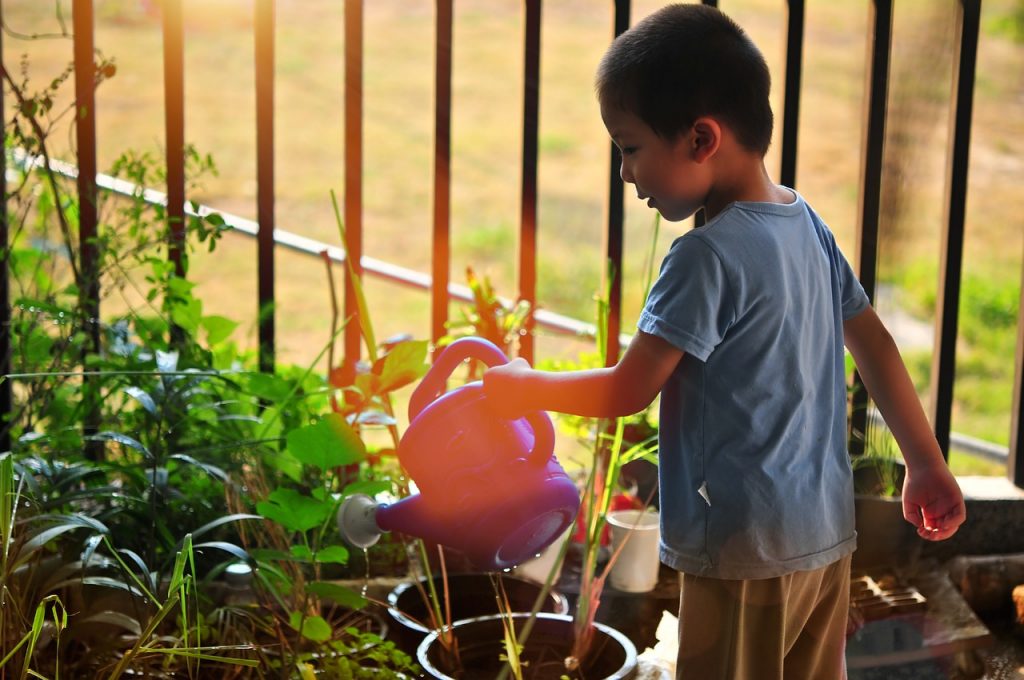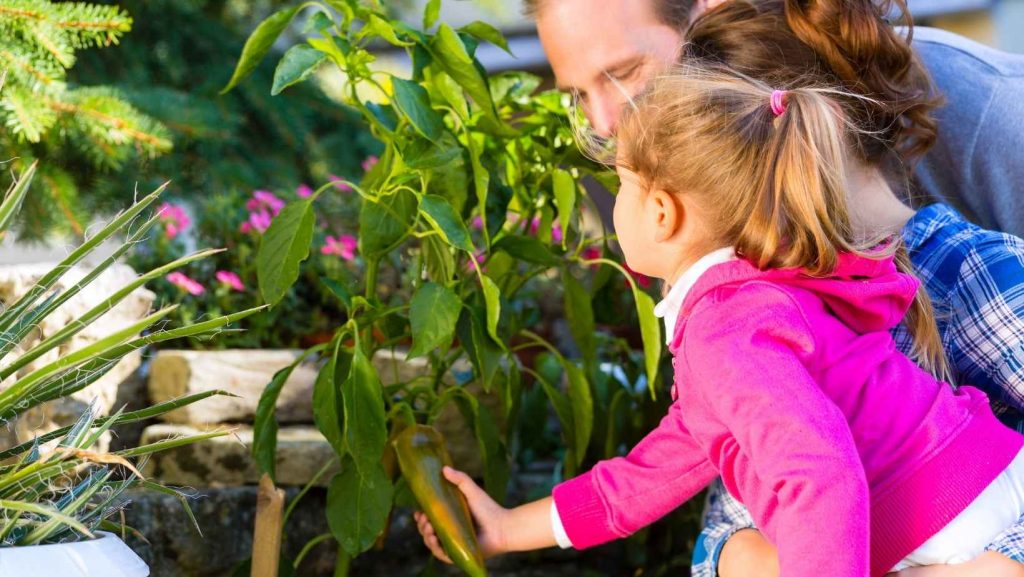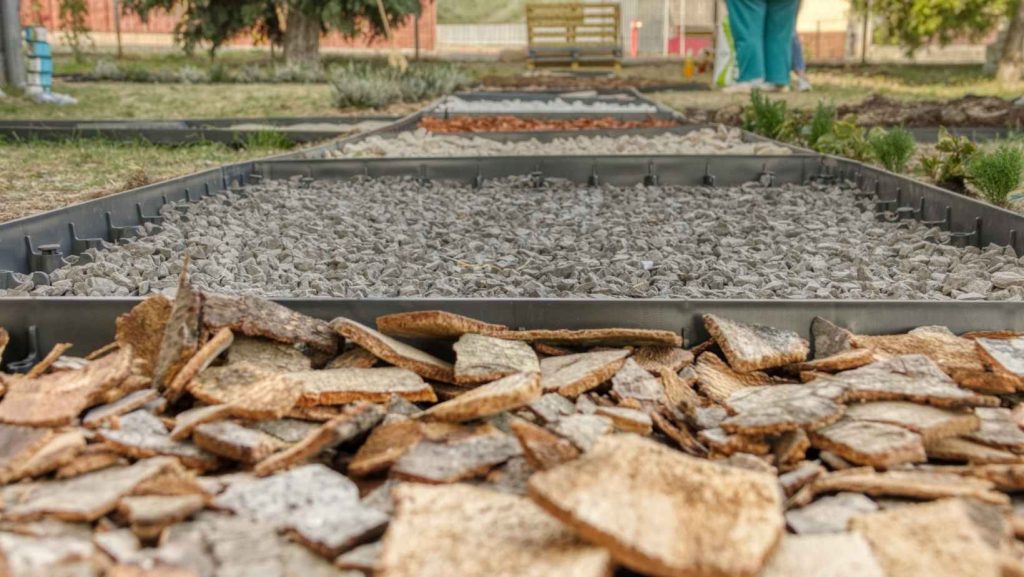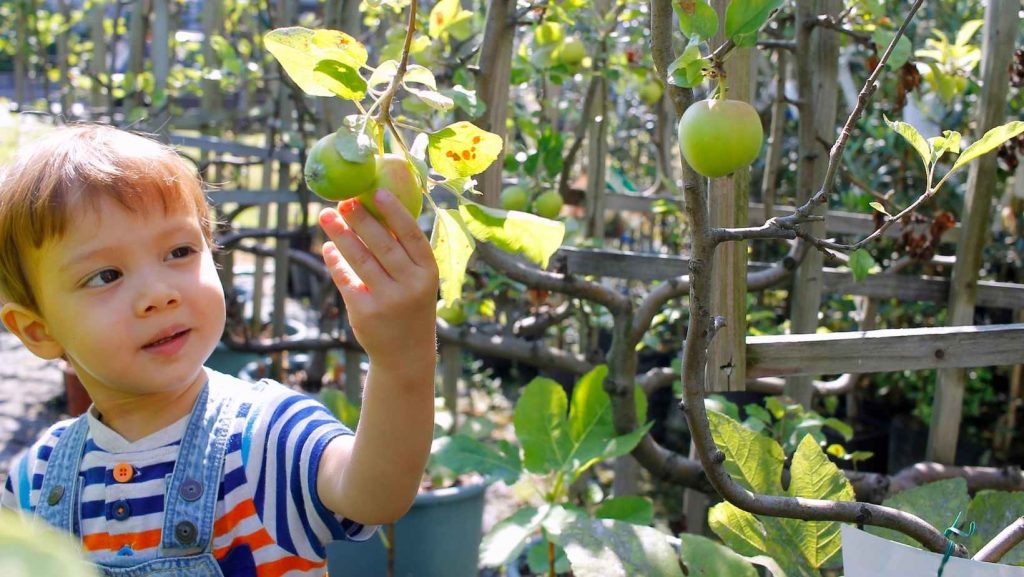Boost your child’s engagement in learning and love for nature by implementing a sensory garden at school.
Sensory gardens for schools are a good investment due to the development benefits they offer to children. As the name implies, a sensory school garden means a garden designed to stimulate human senses such as taste, touch, smell, sight, and hearing.
This type of garden is beneficial for all children however children with special needs or disabilities can particularly benefit.

What is the Purpose of a Sensory Garden?
In a nutshell, a sensory garden:
- Stimulates the physical senses
- Improves and develops physical, emotional, and mental health
- Offers a therapeutic value
- Encourages children to explore and enjoy the environment
Contrary to a typical garden, a sensory garden is unique in the sense that it’s designed to stimulate its audience’s senses. Not only that, but it also helps improve health, mood, physical fitness, and even cognition.
This makes it ideal for children as it helps with their growth and development. Besides, gardening and plant care can expose them to activities that will enhance their gross and fine motor skills.
How Does a School Sensory Garden Stimulate Children’s Senses?
The combination of different elements that comprise a sensory garden helps children be aware and conscious of their surroundings, consequently activating their five senses through their engagement with these elements.
Sensory gardens for schools not only stimulate the children’s senses, but they also help promote a healthy emotional and mental well-being. However, this can only be achieved by choosing the right elements to include inside the garden.
Creating the Right Sensory Gardens for Schools
Creating sensory gardens for schools comes with several aspects to consider such as who specifically it is intended for, what is its main purpose, where it is going to be built, and what elements would be based on the theme and weather of the environment.
To create a sensory garden, you have to keep in mind the following:
- Choose the right environment where you are going to build the sensory garden. Since this is for children, it is important to rigorously consider the safety of the environment.
- Choose the best theme that matches the activity you wanted the children to engage with.
- Choose the design which matches your theme. However, take note of how complicated it can be to the people who will use this sensory garden. Also, remember to think about not only physically healthy children but also children with special needs and physical disabilities.
- Choose the perfect elements to include in your sensory garden that fit your theme.
- Consider your budget when planning, but do not forget to keep safety and the purpose in mind.


What Should Sensory Gardens for Schools Include?
If you have decided and planned out the considerations, the most important part of creating a sensory garden is the elements to include, alongside the consideration of who it is intended for and how big the place is.
These said elements must activate the five senses of children who are going to visit the garden. Let’s have a look at these senses and find out how you can craft the perfect garden to activate each of them:
1.Sight
Once a child enters the garden, the first sense that’s activated is sight. That is why it is important to take these into consideration when adding an element: color, light, shape, pattern, and movement.
The colors must fit the theme of the garden. If the chosen theme is designed to encourage children to be active, warm colors such as red, yellow, or orange are your best options. Roses, sunflowers, and golden daisies are also perfect choices since their names are also familiar to children.
If the chosen theme is for relaxation and peacefulness, cool colors such as blue, green, pink, and white are the ideal color choices. Also, flowers like calla lily, ragged robin, and columbine are perfect for this chosen theme.
Remember that when choosing flowers and plants, it is important that the weather of the garden’s environment and the insects which these flowers can attract must be taken into account. For example, a ragged robin can attract butterflies which adds some movement and life to the garden.
Flowers and plants are not the only elements that can be added. You can also consider adding some accessories such as a small or big water fountain for relaxation, swings, slides, or just a bench where children can sit back and enjoy the view.


2.Touch
It is important to take precautions when choosing the elements that stimulate the sense of touch. Since your visitors are children, curiosity is always at its peak. That is why it is important that they do not get hurt since the main goal of the sensory garden is to promote a safe and healthy environment they can explore.
When adding elements for the sense of touch, you would want to add a variety of mixed textures that are appealing to the touch, either soft, rough, solid, or smooth.
You can choose from flowers with a smooth and soft texture to ornamental grass with a spikey and rough texture but are still gentle enough for the children. According to Penn State Extension, flowers like borage, Irish moss, cornflower are good examples since they can be appealing to touch.


3.Smell
Learning more about the direct and indirect ways of smelling can be a good start when choosing the perfect flower to include in sensory gardens for schools. An indirect way to smell a flower, according to Penn State Extension, can encourage children to explore flowers. For example, stepping on an aromatic groundcover to smell the fragrance of thyme will pique their curiosity.
The direct way is done by smelling the flower by sticking one’s nose to smell its fragrance. Therefore, any flower with a subtle smell like a lily flower can be a great addition to the garden.
Lavender can also be a perfect addition to activate both senses of smell and touch because when it is touched and rubbed against the palm, it produces a very fragrant scent.


4.Hearing
This can be the toughest part to consider when creating a sensory garden. However, the addition of flowers inside the sensory garden means that they can attract pollinating bees and hummingbirds which, in turn, create sound.
A given example above, which is the Columbine flower, can attract hummingbirds. Meanwhile, Native wildflowers such as common sunflower, ox-eye daisy, corn marigold, and black-eyed Susan can attract pollinating bees.
If you are worried that bees can be aggressive, take note that pollinating bees are not aggressive at all. In fact, according to pollinator.org, this type of bee has a gentle nature unless physically attacked or accidentally caught inside clothes.
Water features are also a good source of sound because of the sound of flowing water. If possible, add bamboos around the sensory garden as they’re also a good source of sounds, especially as the wind blows.


5. Taste
This can be considered the dangerous part of planning as precautions must be done strictly. To avoid mishaps and accidents, it is important to separate non-edible and toxic elements as children may confuse them with edible and non-toxic elements.
Planting a wide variety of edible flowers, vegetables, and fruit-bearing plants which promote a variety of flavors that a child can enjoy is a good step. Take into account that it is important that these must be healthy and are attractive to the children’s taste buds as it will encourage them to explore more using their taste buds.
Edible flowers such as zucchini blossoms, lilac flowers which have a minty flavor, nasturtiums which have a peppery and robust flavor, and pansies which has a sweet flavor are prime examples to choose from.
You may also try adding vegetables like tomatoes which children can taste without them even being cooked. Or you can consider adding some fruits like strawberries and herbs like mints and parsley to activate their sense of taste.


Sensory Technique
A sensory garden is a perfect place not only to stimulate children’s five senses but to also encourage them to explore and enjoy the surroundings. Sensory gardens for schools also allow them to develop and practice the so-called sensory technique which can help enhance their mental focus.
This can be done by taking relaxed breathing and helping the children focus their attention on the elements they can see, touch, hear, smell, and taste.
By just doing this technique and using the sensory gardens for schools as the perfect place, you’re not only helping them explore and have fun, but you’re also teaching them how to take care of their mental health at an early age as possible.
Conclusion
Hopefully, this article has taught you the basics of sensory gardens for schools, alongside a few sensory garden ideas, experimenting with the addition of research is the best option you have to create the perfect sensory garden for your intended audience.
Creating a sensory garden can be a lot of work, especially sensory gardens for schools since everything must be taken into account and you have to exert double the effort of precaution to ensure the safety of children. However, the benefits that sensory gardens for schools bring to children can never be underestimated.
Related Posts
-
How to Create a Children's Sensory Garden
Gardens are, by their very nature, a wonderfully sensory experience. Even the simplest…
-
How to Create a Butterfly Garden for Kids
Imagine a visual of your garden where you see a group of colourful butterflies gracefully…
-
Best Planting Activities for Toddlers
Ah, it’s the beautiful summertime when the sunrays are peeping through your window panes and…



